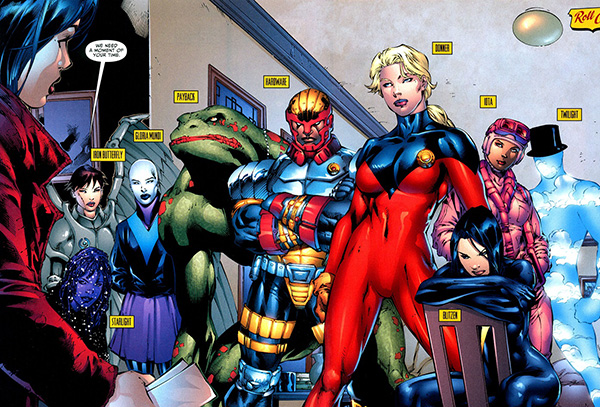Black Superhero History Series: Icon
The next entry in my series is the brainchild of the late great Dwayne McDuffie, a man who created a powerful pantheon of black superheroes. Icon was created in 1993 under the Milestone Comics brand, which was distributed by DC Comics. Icon (along with all other Milestone properties) took place in a different continuity from other DC stories — that was, until 1994 when the character was involved in Worlds Collide, a month-long crossover between Milestone and Superman titles.
Icon appeared monthly in his own series, until the Milestone imprint was discontinued in 1997.
We wouldn’t hear much from Icon or Milestone for a little over a decade, when at San Diego Comic-Con 2018, DC Comics executive editor Dan DiDio announced that the Milestone universe would be revived and merged into the DC universe, as part of an agreement. The merger treated the characters as new to the universe, ignoring the previous crossover. Icon, along with the team the Shadow Cabinet, appeared in Justice League of America (vol. 2) #27, written by McDuffie.

Icon’s origin is not much different from Superman himself, both being aliens who crash-landed on earth, and were adopted by human families. However Icon’s arrival pre-dates the Man of Steel by almost 100 years; in 1839, an alien starliner malfunctioned and exploded, jettisoning a life-pod in the middle of a cotton field in the American South. The pod automatically altered the appearance of its passenger, named Arnus, to mimic the first sentient life form that discovered him. That life form was an enslaved black woman named Miriam, who saw the pod crash land and adopted Arnus as her son.
In the present, Arnus is still alive. He did not age visibly beyond adulthood; to disguise this fact, he periodically assumes the identity of his own son. By the late 20th century, he is posing as Augustus Freeman IV, the great-grandson of his original human identity. Still marooned, Arnus/Freeman waits for Earth’s technology to catch up to that of his life pod. Secretly possessing superpowers that belie his human appearance, he has always performed quiet acts of charity.
However, when Freeman’s house is broken into, he uses his powers for the first time in decades, an action witnessed by one of the intruders, Raquel Ervin, an idealistic teenage girl who was born in Paris Island, the poorest, most gang-ridden neighborhood in Dakota City. Her prospects seemed fairly bleak until this encounter with Freeman. After seeing Freeman use his powers, Raquel persuades him to become a superhero named Icon, with herself as his sidekick, Rocket.
Icon’s powers and abilities consist of vast superhuman strength, superhuman speed, reflexes, stamina and senses, flight, nigh-invulnerability and durability, enhanced mental perception, regenerative healing factor, extraordinary longevity, ability to generate and project positron energy blasts, as well as being a formidable hand-to-hand combatant.
Icon is portrayed as a very intelligent, somewhat stiff kind of person. Due to his upper-class job as a corporate lawyer and “proper” way of speaking, he is often criticized as being a “sell out” or “white-washed.” Icon usually prefers to do everything by the book instead of acting on instinct. During the majority of his series, he mostly fought plain street criminals and those who gained powers from an event in the Milestone universe known as Dakota’s Big Bang.
I highly recommend reading up on Icon and other heroes from the Milestone lineage like Static Shock, because they show further proof how important representation is in media.



